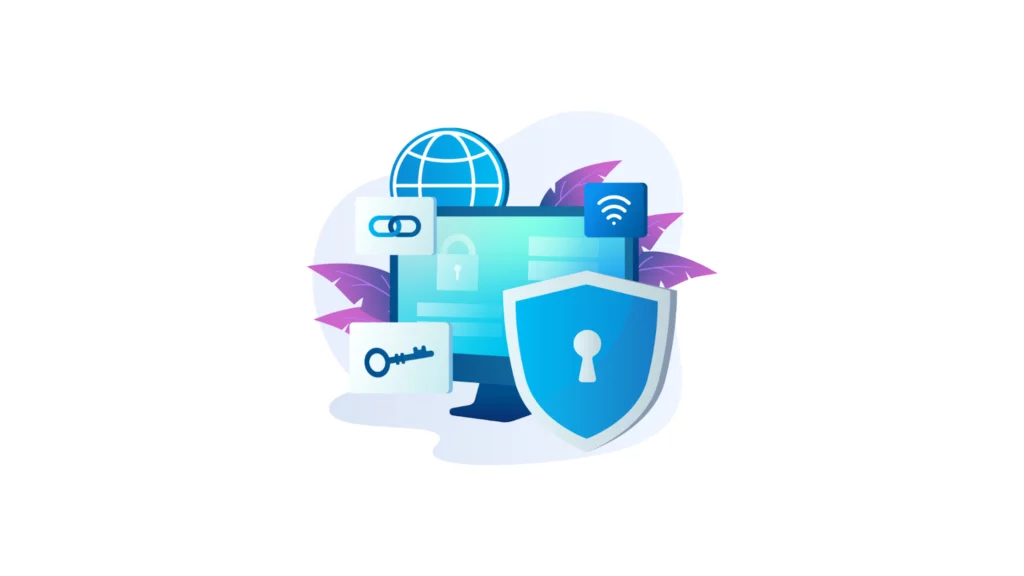
We can safely say that almost all modern-day websites, desktops, and mobile apps use the famous HTTPS protocol. This protocol establishes a secure connection from the client to the server and vice versa.
The S in HTTPS denotes security, “secure,” meaning that the data is not transferred as it is stored in an encrypted form.
Now, this encryption is achieved with the help of a technology known as Transport Layer Security (TLS). It was previously known as Secure Sockets Layers (SSL). TLS 1.3 is the latest version of this same technology.
The point is to prevent unwanted sniffing of sensitive data like personal content, usernames, passwords, and financial data. The cryptographic encryption obtained from TLS ensures that all your data is unreadable by third parties.
Support for TLS 1.2 went live in 2008, and for TLS 1.3 since August 2018. These are considered the standards for application creation. The older versions of TLS, namely, TLS 1.0 and TLS 1.1, were discontinued in 2019. SSL versions 2.0 and 3.0 are considered insecure and were discontinued in 2019.
If you are creating an app while reading this guide and wondering which TLS version you should choose, I’d highly recommend the TLS 1.3 version since it is the most secure.
This guide is all about the TLS specifics, the benefits of TLS 1.3, and the newly added support for the encryption protocol.
Why is TLS 1.3 the best cryptographic protocol?
Most secure cryptographic ciphers: TLS 1.3 only has five cipher suites compared to the 58 suites that TLS 1.2 did! The ciphers with perfect forward secrecy are supported, while those with a higher chance of being vulnerable and at risk are discarded. We can conclude that not all TLS 1.2 connections are secure, so using the latest TLS 1.3 version is best.
Improved Latency with Zero Round-Trip Time (0-RTT) Key Exchanges: Clients can send the application data to the server immediately after the ClientHello message with zero round-trip time (0-RTT).
Also, TLS 0-RTT, also referred to as early data, is a method of lowering the time to the very first byte of data on a TLS connection. TLS 1.3 only needs 1-RTT of the cryptographic protocol, whereas TLS 1.2 and the previous ones require two.
Faster and easier TLS handshake: The older TLS versions carried the handshake in plain text. This simple text introduced additional steps for both encryption and decryption. But, with the TLS 1.3 version, the certificate encryption is applied by default. This lowers the number of packets needed for a successful handshake from 5-7 to a mere 0-3.
Here’s what the National Security Agency (NSA) has to say about using the latest version of TLS:
“Organizations encrypt network traffic to protect data in transit. However, using obsolete TLS configurations provides a false sense of security since it looks like the data is protected, even though it is not.”
– National Security Agency (NSA) guidelines on eliminating outdated TLS
What are some critical TLS and SSL vulnerabilities?
Several expired cryptography features caused vulnerabilities or unintentionally enabled specific cyber attacks. Here is a list of TLS 1.2 cryptography weaknesses and the vulnerabilities/attacks associated with each.
- RSA key transport: Doesn’t provide forward secrecy
- CBC mode ciphers: BEAST and Lucky 13 attacks seen
- RC4 stream cipher: Not secure enough to be used in HTTPS
- Arbitrary Diffie-Hellman groups: CVE-2016-0701
- Export ciphers: FREAK and LogJam attacks seen
Many TLS 1.2 features have been removed in addition to those listed above. The idea is to make it impossible for someone to exploit the weaker aspects of TLS 1.2.
This is an instance like the one where the government made it illegal for the manufacturers to create new cars without seatbelts: The government’s goal was for seatbelt-less cars to be phased out so that everyone would end up much safer.
While some drivers could still choose to use older car models, the cars without seatbelts eventually disappeared from the roads.
TLS 1.3: Conclusion
With TLS 1.3, many digital security breaches have been successfully avoided. As they say, prevention is always better than cure. The same applies to this cryptographic protocol.
Its modern cryptographic algorithms reduced handshake latency and compatibility with many applications, making TLS 1.3 the best protocol for ensuring the confidentiality and integrity of data in transit.
You never know what’s waiting around the corner in life, both online and offline. And since these both are the same nowadays, it makes sense that using the latest version of TLS, the TLS 1.3.
FAQs
Does Cloudflare support TLS 1.3?
Cloudflare takes all of the latest networking protocols seriously and hence lends support even to the most recent ones, like the TLS 1.3.
Cloudflare supported TLS 1.3 in 2016 when the IETF finished polishing it. You can also look at the difference between TLS 1.2 and 1.3 from Cloudflare’s Head of Cryptography, Nick Sullivan.
Is it still safe to use the older TLS versions?
The older TLS versions, TLS 1.0 and TLS 1.1, have been completely discontinued, and using them is a sure-shot way to invite cyber attacks.
On the other hand, TLS 1.2 is still usable, but only if the weak ciphers and algorithms are removed. But, it is always best to be on the latest TLS 1.3 to ensure your digital security is not breached.
Is TLS 1.3 widely adopted?
Yes, TLS 1.3 has gained widespread usage across web servers and browsers due to its enhanced and latest security features, which users prefer more.
What encryption algorithms does TLS 1.3 support?
TLS 1.3 supports modern cryptographic algorithms like Poly1305, Elliptic Curve Diffie-Hellman, and ChaCha20 for critical exchanges.



